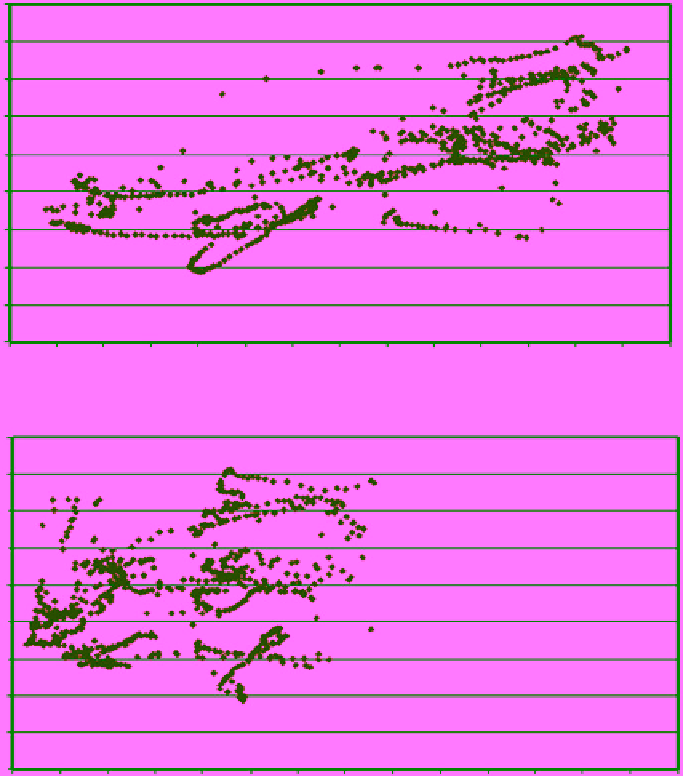Geology Reference
In-Depth Information
0.14
0.12
0.10
0.08
0.06
0.04
0.02
0.00
-0.02
-0.04
-0.02 0.00
0.02
0.04
0.06
0.08
Polarization ratio: PR(19)
0.10
0.12
0.14
0.16
0.18
0.20
0.22
0.24
0.26
0.14
0.12
0.10
0.08
0.06
0.04
0.02
0.00
-0.02
-0.04
-0.02
0.00
0.02
0.04
0.06
0.08
Polarization ratio: PR(85)
0.10
0.12
0.14
0.16
0.18
0.20
0.22
0.24
0.26
Figure 10.18
Temporal distribution of the polarization and gradient ratios during early growth of sea ice. Data
were obtained from simulated sea ice grown in an outdoor pool in the National Research Council in Ottawa,
Canada, while the ice was growing up to 9 cm thick between 22 and 31 December 2001. The figure shows the
wide scattering of the data. The samples shown were measured every 30 min.
microphysical properties of the snow and ice.
Tonbeo
et al
. [2006] studied the sensitivity of the different ice con-
centration algorithms using SSM/I data. The algorithms
included NASA Team, Bootstrap, and Near 90 GHz. The
study proceeded with using a sea ice version of Microwave
Emission Model of Layered Snowpacks (MEMLS) to
simulate the brightness temperature from sea ice with
input of snow and ice parameters obtained from snow‐
covered FY ice in the Greenland Sea (more details about
MEMLS are included in section 10.6.). The data were
then used in the aforementioned ice concentration
retrieval algorithms. Among a few other findings the
study concluded that the Bootstrap algorithm is the least
sensitive to warm air intrusions in the Arctic Ocean. Ice
concentration from the NT algorithm is not sensitive to
the grain size of the snow as much it is sensitive to its
density (concentration estimates decreases as the snow
density increases).
The algorithms that use data from the high‐frequency
passive microwave channels (85 or 89 GHz) such as BRI,
NT2, ASI, and ECICE if uses these channels require
accurate accounting for atmospheric influences to recover
the surface emission. These influences include integrated
water vapor, cloud liquid water, and wind‐driven surface
roughness of the ocean (section 7.7.1). Under small val-
ues of cloud liquid water,
Svendsen et al
. [1987] used a
simplified radiative transfer equation to successfully esti-
mate ice concentration using observations from SSM/I

